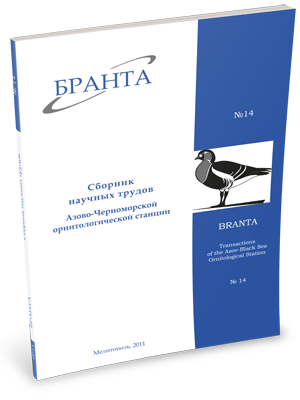
Transactions
of the Azov-Black Sea Ornithological Station



Influence of weather conditions on phenology and breeding success of the Great Grey Shrike (Lanius excubitor excubitor L.) in Podillia
M. O. Tarasenko
Analysis of breeding phenology and infl uence of weather conditions on reproductive indices of the Great Grey Shrike was done basing on observations of 43 pairs during the breeding periods of 2006- 2010 in Western and Eastern Podillia. In Podillia the Great Grey Shrike is a partly migrating species: females move to the steppe zone, males stay to winter within breeding areas. Pairs form in mid-February. Nests are built in the second half of March. The fi rst egg is averagely laid 3.04 ± 4.2 (within 23.03-9.04). The incubation period takes 15-17 days. Chicks are averagely hatched 22.04 ± 4.5 (within 10.04-30.04). Incubation success is 98.9%, success of postembryonal breeding period – 43.7%, breeding success is 86.7%. Breeding phenology of the Great Grey Shrike is impacted by weather conditions of pre-breeding and breeding periods. Main reproductive indices in Podillia are infl uenced by air temperature and intensity of precipitation in the breeding period.
Read the paper in a PDF file